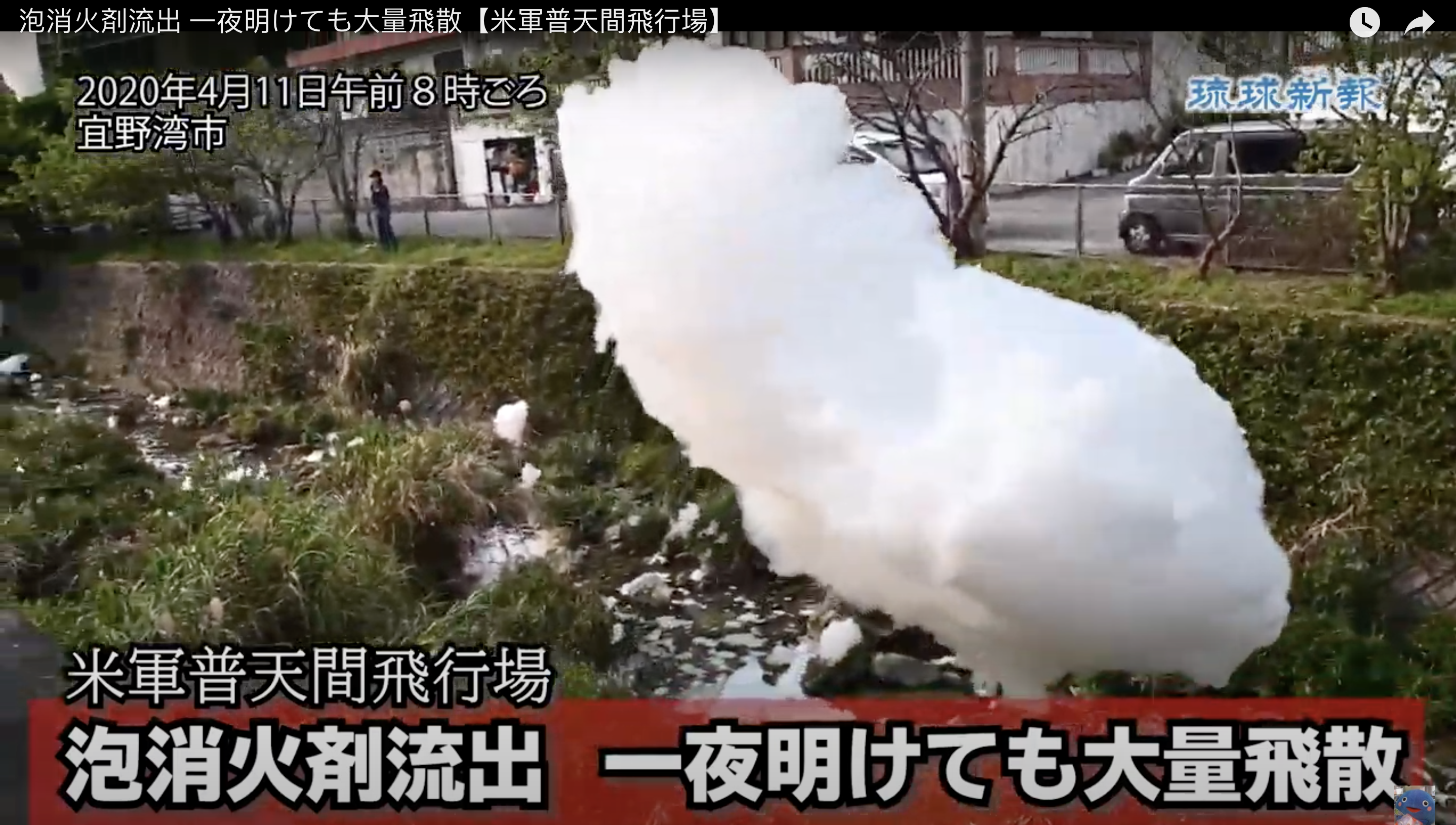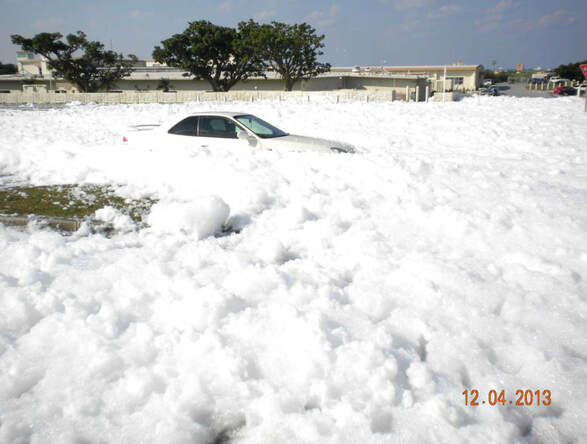
U.S.-occupied Okinawa on April 10. The base discharged huge, carcinogenic airborne bubbles to settle into residential neighborhoods.
By Pat Elder, April 12, 2020
米軍基地から漏れ出した有害物資を含む泡消火剤
“Foam containing harmful materials leaked from U.S. military base”
According to Okinawa-based Toshio TAKAHASHI, The Okinawa Defense Bureau has provided information on the release of foam from Futenma Airfield, which occurred on Friday, April 10, 2020. The US Marine Corps confirmed the installation leaked a massive amount of foam containing PFAS. The Okinawan government has requested the American authorities investigate the specific cause of the release and quickly control and collect it.
The foamy water flowed out of sewer pipes from the Marine Corps Air Station Futenma next to Satsuki Nursery School. The carcinogenic foam flows to the Hira River in Kazuno in Ginowan City. The airborne bubbles are settling into residential neighborhoods. Okinawans are warned not to touch the foam or put it in their mouths.

According to news reports, David Steele, commander of Futenma Air Base, said, “If it rains, it will subside.” The exact cause of the leak has not been disclosed by the American authorities at the Marine Corps base.

Meanwhile, a DOD PFAS Task Force Progress Report, dated March 2020, gives overseas U.S. bases high marks on managing PFAS issues.
The Task Force reviewed the Department’s current overseas environmental cleanup policy and determined that the DoD takes “prompt action on base to address substantial impacts to human health and safety due to DoD activities and to comply with international agreements.”
In 2013 a massive release at nearby Kadena Airbase was caused by a drunk Marine who activated a fire-fighting system. It filled a hangar with more than 1500 liters of the cancerous foam. Although the carcinogens flowed off the base into nearby waterways and the ocean, military officials decided not to report the leak to Japanese authorities or local residents. Nor did they alert GIs or Okinawan employees on the base to the dangers.
In a statement to the military newspaper at the time, Stars and Stripes, a US military spokesperson appeared more concerned about damage to aircraft than human health. “Kadena’s capabilities and readiness have not suffered,” quoted the newspaper.
According to Jon Mitchell’s report in the Asia Pacific Journal, “Other incidents at Kadena Air Base included the escape of approximately 17,000 liters of agent during a three-day period in 2001, attributed by base officials to mechanical malfunctions.3 Further leaks between 2012 and 2014 totaled more than 3400 liters. One was blamed on malfunctioning equipment; another on mechanical and electronic malfunctions. A third incident which spilled 1135 liters was recorded as “operator error.”

“Foam fire extinguisher spills from the US Futenma Airfield”
1st clip: U.S. Military Futenma Air Base: A huge amount of fire foam discharged; even on the next day 2nd clip: The issue of fire foam that contains carcinogenic PFOS being discharged from the U.S. Military Futenma Air Base in Okinawa Prefecture
3rd clip: It has been confirmed that a large amount of foam was discharged in a residential area in Ginowan City
4th Clip: [this is the clip with the firefighters in yellow firefighting gear] The firefighting foam was emitted the night before;
5th clip: but they were unable to recover (or contain) it in the neighborhood
6th clip: and it was blown away by the wind, flying off in all directions
A second video shows the carcinogenic “snowflakes” soaring 100 feet above Ginowan City.
Pat Elder is a World BEYOND War board member and runs MilitaryPoisons.org.








